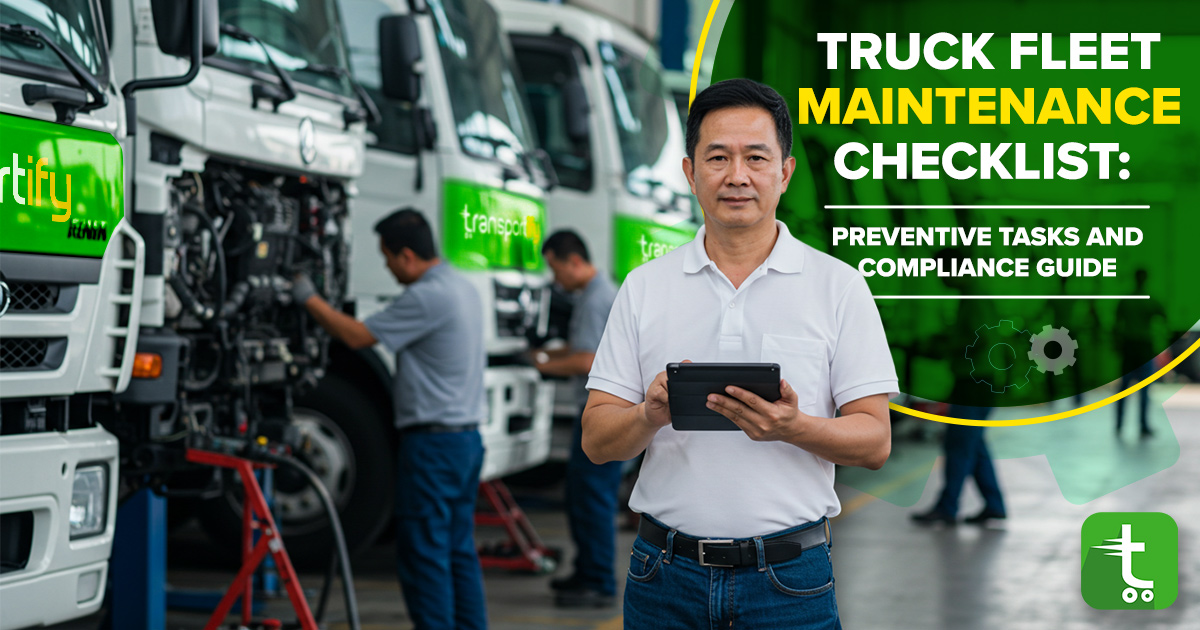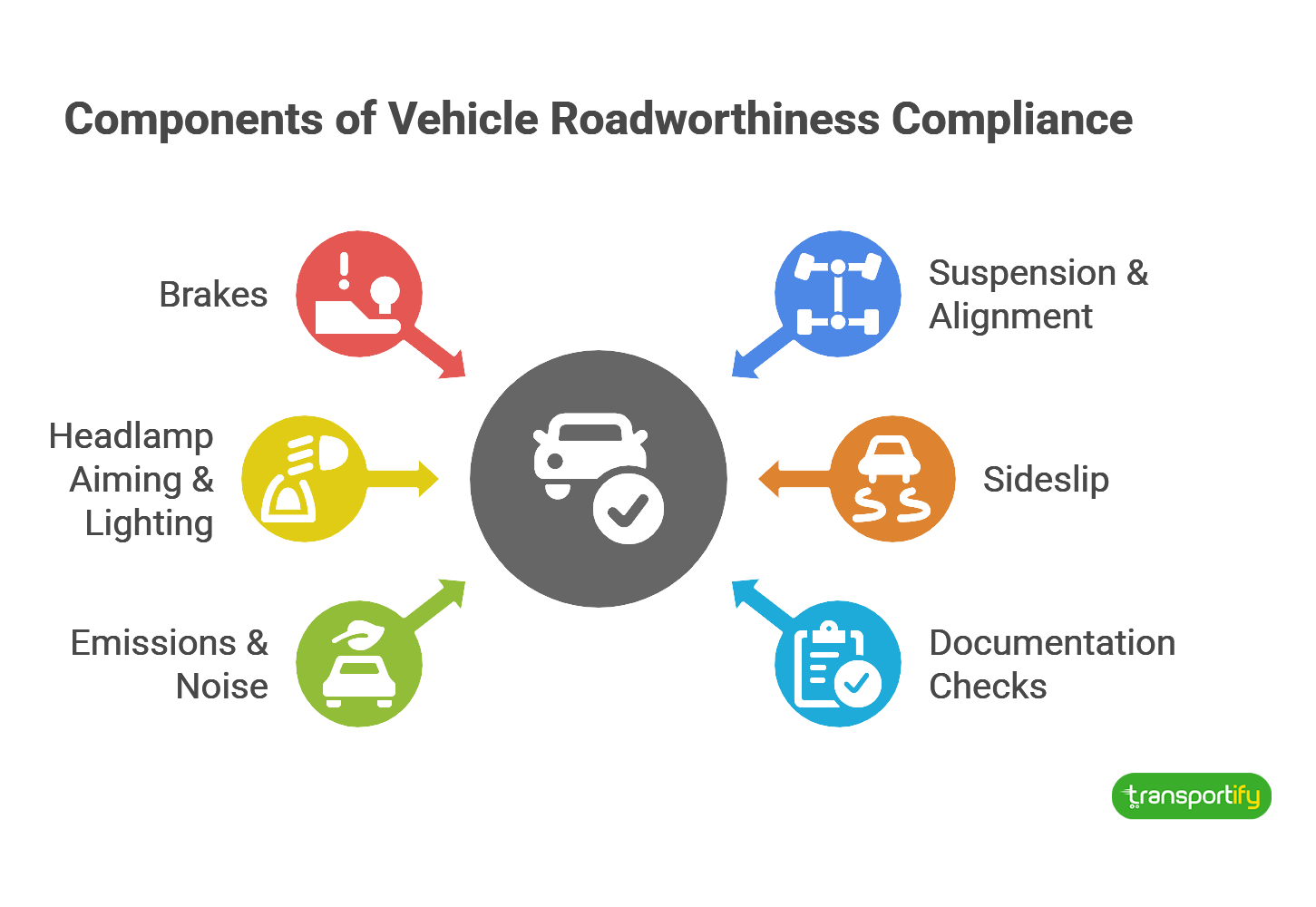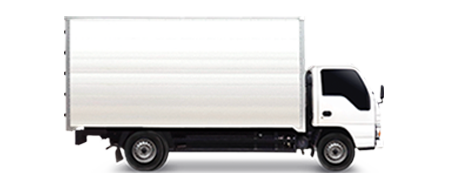
Preventive maintenance (PM) for truck fleets is a structured, interval-based approach to vehicle care designed to avoid costly breakdowns, improve safety compliance, and extend asset lifespan. Instead of waiting for parts to fail mid-route, operators inspect and replace components on scheduled cycles, daily, weekly, monthly, quarterly, and annually.
What Preventive Fleet Maintenance Checklist Means for Trucking Businesses
Preventive maintenance checklist is the proactive scheduling of truck inspections and minor repairs at defined intervals, using mileage, engine hours, or calendar days as triggers. Unlike corrective repairs, PM addresses wear items before they cause breakdowns or inspection failures.
Why it matters in 2025
Truck downtime can cost up to PHP 25,000 to PHP 40,000 per day in lost opportunity on a 10-wheeler (USD 448–760 equivalent). If a truck fails Private Motor Vehicle Inspection Center (PMVIC) or breaks down en route, penalties compound with idle driver wages, customer SLA breaches, and possible liquidated damages.
Compliance Snapshot for Fleets Operating in the Philippines

The Land Transportation Office (LTO) enforces roadworthiness through MVIS, executed at PMVIC facilities. Test lines cover:
- Brakes (roller brake tests)
- Suspension & alignment
- Headlamp aiming & lighting systems
- Sideslip
- Emissions & noise
- Documentation checks
Special notes for PH fleets:
- Vehicle weight classes matter: PMVICs typically handle up to 4,500 kg GVW, while heavy trucks use alternate agency channels. Still, your internal PM should exceed PMVIC baselines.
- Mandatory in certain regions: Where PMVICs exist, inspection is required prior to registration renewal; otherwise LTO facilities handle inspections.
Takeaway: Align your preventive fleet PM with MVIS/PMVIC test criteria — treat daily/quarterly PM as “mini-MVIS runs.” That way, every truck passes with fewer delays.
Brake System: Top PH Roadworthiness Failure
Brake defects are the #1 cause of roadworthiness failure in the Philippines. PMVIC 2024 results showed:
- 45.1% failed braking tests
- 9.2% failed alignment/steering
A systematic brake PM program therefore delivers the biggest risk reduction and ROI.
Which Brake Wear Limits & Leaks Should Be Checked?
- Check brake lining thickness (minimum ≥ 6.4 mm for steer, ≥ 3.2 mm for drive axles).
- Inspect for air leaks, low-pressure warnings, and compressor operation.
- Verify parking brake holds on grades.
- Drain moisture and oil from air tanks daily (compressed-air brakes).
Failing here aligns directly with the 45.1% fail rate. Proactive brake inspections translate to avoided downtime and fines.
How Often Should Alignment Checks Be Scheduled?
Given the 9.2% PMVIC alignment fails, steering checks should occur at least:
- Quarterly for long-haul rigs.
- Monthly for urban/delivery truck fleets navigating potholes and curbs.
Evidence of alignment drift: uneven tire wear, vehicle pull, loose steering joints.
What Brake Records Should Be Archived?
- PMVIC printouts of braking/alignment results.
- Internal service reports (lining changes, air compressor service).
- Work orders authorized by LTO/ accredited shops.
Maintaining these records helps fleets demonstrate compliance during LTO audits. Learn more about the logistics industry in the Philippines and why compliance-ready vehicles are non-negotiable.
Tires & Wheels: Accelerated Wear and Enforcement Focus
In 2025, LTO roadside operations highlighted worn-out tires as a major roadside hazard. Overloading further compounds this issue, Region I reported 38.65% overloading violations (5,134 apprehensions) in 2023, stressing tires beyond design.
What Minimum Tread Depth & Inflation Records Should Fleets Keep?
- Steer axles: ≥ 4 mm; drives: ≥ 2 mm minimum tread.
- Maintain PSI per OEM guidelines (document readings weekly).
- Digital tire pressure monitoring (TPMS) logs can be archived for reference.
How Should Tire Rotation/Inspection Change for Heavy Corridors?
- High-load, long-haul corridors (e.g., Manila–Baguio) require shorter 20,000–25,000 km rotations.
- Urban L300s and vans should rotate every 10,000–15,000 km due to curbing impact.
➡ See professional trucking services in the Philippines that standardize tire PM as part of their delivery model.
➡ Learn how the trucking industry is managing enforcement risks under rising roadside checks.
Lights & Electrical: Frequent PMVIC Defect
PMVIC/VICOAP 2024 revealed 37.3% of inspected vehicles had defective headlights, making this the second-highest failure category.
What Lighting Checks Reduce the 37.3% Fail Risk?
- Confirm headlight aim & brightness.
- Inspect harnesses for chafing/loose grounds.
- Test turn signals, reverse lights, brake lamps, and license plate lights.
Which Spares Should Be Carried for Night Routes?
- Spare halogen/LED bulbs compatible with primary lamps.
- Fuse assortment matching truck specs.
- Reflector tape for emergency roadside stops.
Load, Axle Weight & Cargo Securement: RA 8794 Compliance
Under RA 8794 and DPWH DO-16 (2002) :
- Single axle weight limit = 13,500 kg
- GVW cap (code 12-2) = 41,500 kg
Enforcement:
- DPWH weighed 401,785 trucks in 2021; 34.11% were overloaded.
- LTO apprehended 9,736 overloaded trucks Jan–Jul 2025.
What Daily Axle/GVW Checks Prevent Penalties?
- Scale weights before dispatch.
- Maintain axle load slips in the truck fleet record folder.
- Train dispatchers on DPWH code tables.
How Should Load-Securing Differ by Vehicle Type?
- Flatbeds: chains, ratchet straps, ≥ 4 tie-downs per load.
- Vans/Wing vans: interior blocking, load bars, seals.
Instruments & Driver Alerts: Calibration Gaps
PMVIC 2024 found:
- 5.3% speedometer failures
- 9.2% alignment failures
What’s the Calibration Maintenance Checklist?
- Odometers & speedometers should be bench-tested annually.
- Odo drift impacts PM schedules; keep certificates from calibration centers.
Which Warning Lamps Require Immediate Yard Hold?
- ABS, check engine, brake lamps = immediate yard hold.
- DEF low-level, minor TPMS = deferred but logged repair.
Traffic, Routes & Brake Fade Risk: Plan for Stop-Go Cities
According to TomTom 2024:
- Metro Manila: 32m 10s / 10 km (avg 18.7 km/h, 42% congestion)
- Davao: 32m 59s / 10 km
How Should Service Intervals Adjust?
- Urban low-speed trucks hit service limits sooner due to idling and stop-start.
- Cut oil & filter intervals by 20–30% for city-deployed units.
Which Routes Demand Pre-Dispatch Brake Checks?
- Baguio & Kennon Road descents require full brake diagnosis before uphill assignments.
- Mountain roads magnify fade risk compared to flat Manila corridors.
Partner With Transportify: Enroll Your Truck Fleet and Driver
Starting a logistics business isn’t only about maintaining a roadworthy fleet, it’s also about finding steady, profitable loads. After you’ve built your preventive maintenance checklist, the easiest next step is to enroll your van or truck with Transportify, enabling you to access a nationwide customer base without having to spend heavily on your own sales and marketing.
 |
Transportify operates as a leading on-demand logistics marketplace in the Philippines, connecting shippers from e-commerce, FMCG, retail, and manufacturing with truck owners and drivers. This means your assets, whether a small van, L300, wing van, 6-wheeler, or 10-wheeler, can start generating revenue almost immediately after passing compliance and onboarding.
How Enrollment Works
- Prepare Vehicle and Documents
- Copy of OR/CR (Official Receipt & Certificate of Registration)
- Updated PMVIC inspection pass and valid LTO registration
- Photos of the truck (interior, exterior, cargo space)
- Updated preventive maintenance log (a plus for fleet reliability marks during screening)
Prepare Your Driver Requirements
- Valid professional driver’s license
- NBI or police clearance
- Training or experience record (Transportify provides platform orientation as well)
Download the Partner Driver App
- Drivers and owners enroll through the app (available on Android and iOS).
- Upload digital copies of documents and wait for account confirmation.
Vehicle and Driver Orientation
Short briefing on customer service expectations, cargo handling, uniform adherence, and use of the Transportify app for route optimization and cashless billing.
Start Accepting Bookings
Once activated, your truck and driver are immediately visible in the booking marketplace.
 | or |









 Chat
Chat